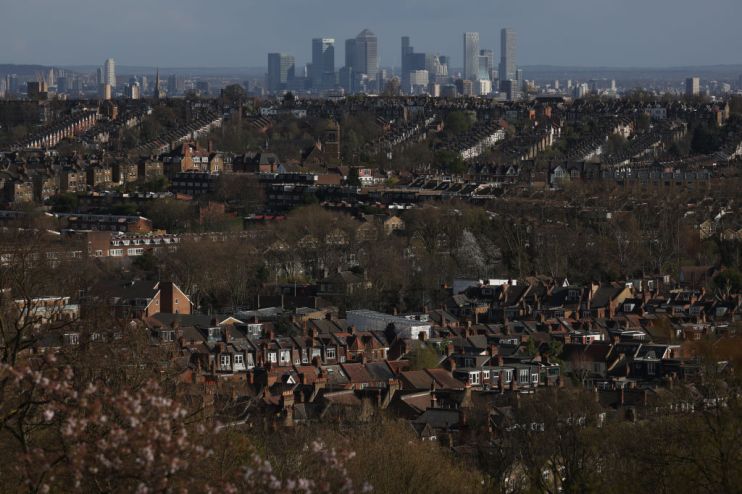UK recession to hit sooner than first thought as economy unexpectedly shrinks

The UK is “dangerously close” to tipping into a recession sooner than predicted due to households already cutting spending ahead of the cost of living squeeze tightening.
That’s according to City economists’ assessment of weaker than expected GDP figures published today by the Office for National Statistics (ONS).
The economy shrank 0.1 per cent in March, worse than analysts’ expectations, reinforcing predictions that the UK is in the teeth of stagflation – when growth is weak and prices are soaring.
London’s FTSE 100 tumbled over two per cent on the news, eventually closing down 1.56 per cent, while the pound initially tanked against the dollar before clawing back losses.
The data illustrates the economy was reversing before a 1.25 percentage point national insurance hike and a likely inflation surge above an already three decade high of seven per cent – due to a 54 per cent uplift to the energy price cap – hit in April, raising the prospect of GDP growth tumbling even lower over the coming year.
The data is the first to fully capture the impact of Russia’s invasion of Ukraine sending energy costs soaring.
Brits are already slashing non-essential purchases as their budgets are consumed by higher energy and food bills.
Output in the services sector, the UK’s growth engine, dipped 0.2 per cent in March, driven by a 2.8 per cent fall in retail sales.
Spending on car repairs tumbled a shade over 15 per cent, dragging consumer-facing output lower.
On a quarterly basis, the economy grew 0.8 per cent, among the best in the G7, but still lower than expected. All expansion was concentrated in January.
Evidence of cooling demand prompted economists to warn a technical recession – defined as two consecutive quarters of contraction – may hit sooner than first thought.
“It appears as though the economy is dangerously close to a recession,” Paul Dales, chief UK economist at Capital Economics, said.
Last week, the Bank of England said a recession is likely to hit next year, while the National Institute of Economic and Social Research (NIESR) said today’s stats mean a slump is now closer than first feared.
An easing in discretionary spending “is particularly ominous,” Dales said, given real incomes are forecast to erode at one of the quickest rates in modern history as a result of inflation reaching a double-digit peak in October.
The Bank of England will pile more pressure on households’ finances by looking through weaker growth and launching further rate hikes to tame the pace of price rises, analysts said.
The central bank has already lifted borrowing costs at each of its last four meetings, taking them to 13-year high of one per cent, although they are still low by historical standards.
Pressure on Chancellor Rishi Sunak to step up support for the poorest households to partially shield them from the energy price shock is likely to intensify after today’s weak growth numbers.
“Growth is the best way to help families in the longer-term so as well as easing immediate pressures on households and businesses,” Sunak said, adding the government is “ready to do more” to cushion the cost of living crunch.
The NIESR estimates an additional 250,000 will tip into extreme poverty this year without more help.
Labour called on the government to launch an emergency budget to deal with the cost of living crisis.